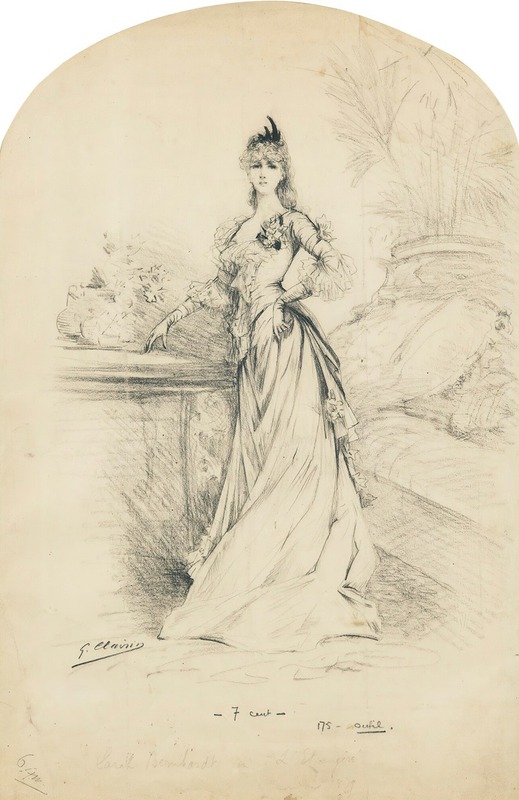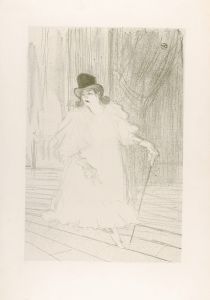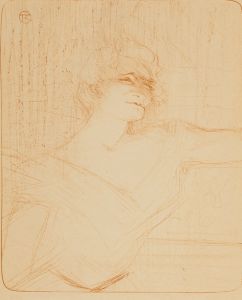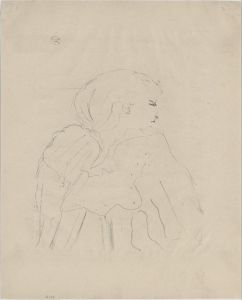
Sarah Bernhardt in l’Etrangère
A hand-painted replica of Georges Jules Victor Clairin’s masterpiece Sarah Bernhardt in l’Etrangère, meticulously crafted by professional artists to capture the true essence of the original. Each piece is created with museum-quality canvas and rare mineral pigments, carefully painted by experienced artists with delicate brushstrokes and rich, layered colors to perfectly recreate the texture of the original artwork. Unlike machine-printed reproductions, this hand-painted version brings the painting to life, infused with the artist’s emotions and skill in every stroke. Whether for personal collection or home decoration, it instantly elevates the artistic atmosphere of any space.
Sarah Bernhardt in l’Etrangère by Georges Jules Victor Clairin is a notable painting that captures the essence of one of the most famous actresses of the 19th and early 20th centuries, Sarah Bernhardt. Painted by the French artist Georges Jules Victor Clairin, this artwork is a testament to the close professional and personal relationship between the artist and the actress.
Sarah Bernhardt, born Henriette-Rosine Bernard in 1844, was a French stage actress who gained international fame for her dramatic roles and charismatic presence. She was often referred to as "The Divine Sarah" and was known for her performances in both classical and contemporary plays. Bernhardt's influence extended beyond the stage, as she became a cultural icon of her time, known for her distinctive voice, dramatic flair, and unconventional lifestyle.
Georges Jules Victor Clairin, born in 1843, was a French painter and illustrator known for his portraits and Orientalist works. He studied at the École des Beaux-Arts in Paris and was a contemporary of many notable artists of his time. Clairin's friendship with Bernhardt began in the 1870s, and he became one of her most frequent portraitists. His works often captured the theatrical and enigmatic qualities of Bernhardt, emphasizing her dramatic persona.
The painting Sarah Bernhardt in l’Etrangère depicts Bernhardt in one of her theatrical roles, showcasing her in a costume that reflects the character she portrayed. Clairin's attention to detail and his ability to capture the essence of Bernhardt's theatrical presence are evident in the painting. The artwork is characterized by its rich colors and dynamic composition, which highlight Bernhardt's commanding presence and the dramatic nature of her performances.
L’Etrangère, the play in which Bernhardt starred, was written by Alexandre Dumas, fils, and premiered in 1876. The play was one of many in which Bernhardt demonstrated her versatility and depth as an actress. Clairin's painting not only serves as a portrait of Bernhardt but also as a representation of the theatrical world of the time, capturing the essence of the performance and the cultural milieu in which Bernhardt thrived.
The painting is part of a larger body of work by Clairin that includes numerous portraits of Bernhardt, each capturing different aspects of her personality and career. These works are significant not only for their artistic merit but also for their historical value, providing insight into the life and career of one of the most celebrated actresses of her era.
Sarah Bernhardt in l’Etrangère remains an important piece in the study of both Clairin's artistic oeuvre and Bernhardt's illustrious career. The painting is a reflection of the symbiotic relationship between artist and muse, where Clairin's artistic vision and Bernhardt's theatrical brilliance come together to create a lasting legacy in the world of art and theater.

















